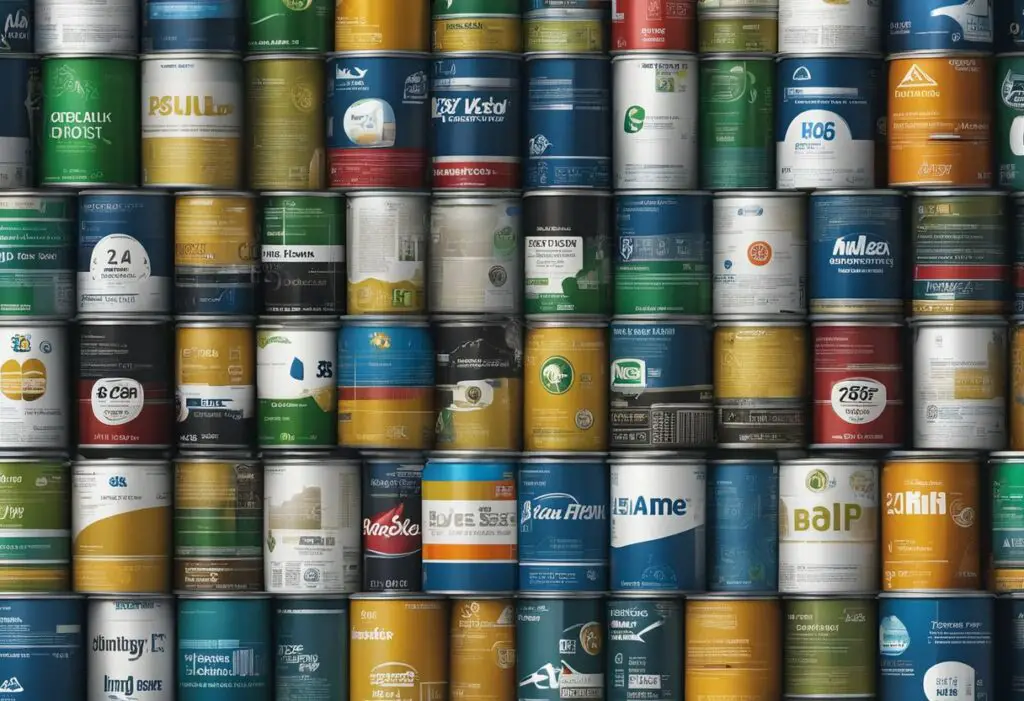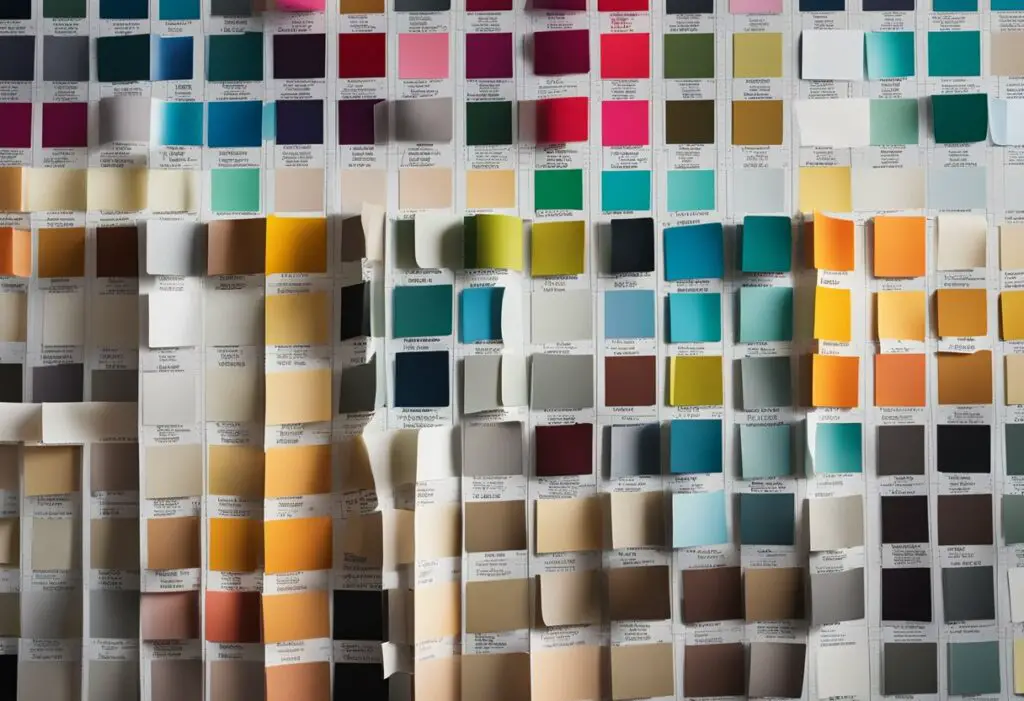When it comes to painting your home, choosing the right brand can make all the difference. With so many options on the market, it can be overwhelming to decide which paint brand to use for your interior or exterior project. That’s why we’ve compiled a comprehensive comparison of the top paint brands to help you make an informed decision.

First and foremost, it’s important to consider the type of paint you need. Interior paint is formulated for use inside your home, while exterior paint is designed to withstand the elements. Some brands offer both types of paint, while others specialize in one or the other. Additionally, you’ll want to consider the design and color options available from each brand to ensure you find the perfect fit for your home.
Quality is also a key factor when choosing a paint brand. Look for brands that offer durable, long-lasting paint that will hold up over time. Brands that use high-quality ingredients and have a reputation for producing consistent results are typically a safe bet. Keep in mind that while higher-quality paint may come with a higher price tag, it can ultimately save you money in the long run by requiring fewer coats and lasting longer.
Evaluating Paint Quality and Performance
When it comes to choosing the right paint for your project, it’s important to consider factors such as durability, coverage, VOC levels, and finish types. Here are some key points to keep in mind when evaluating paint quality and performance.
Durability and Coverage
Durability is an essential factor to consider when choosing a paint brand. You’ll want a paint that can withstand the test of time, especially if it’s for high-traffic areas. Coverage is another crucial aspect to consider. A paint with good coverage will require fewer coats, which can save you time and money.
VOC Levels and Environmental Impact
Volatile Organic Compounds (VOCs) are chemicals found in paints that can contribute to air pollution and have negative effects on human health. Low-VOC and zero-VOC paint options are available, which emit fewer harmful chemicals and have less of an impact on the environment. The Environmental Protection Agency (EPA) has set standards for VOC levels in paint, so be sure to check the label before making your purchase.
Finish Types and Their Applications
Different paint finishes have different applications. Matte and eggshell finishes are great for hiding imperfections and providing a smooth, even look. Gloss finishes are ideal for high-traffic areas and surfaces that require frequent cleaning, as they are more stain-resistant and durable. It’s important to choose the right finish for your project to achieve the desired look and functionality.
Comparing Top Paint Brands
When it comes to choosing the right paint brand for your project, there are several factors to consider. The top paint brands in the market offer a wide range of products that cater to different needs, preferences, and budgets. In this section, we will take a closer look at some of the most popular paint brands and their product lines.
Sherwin-Williams Product Line
Sherwin-Williams is one of the largest paint manufacturers in the world, known for its high-quality products and innovative technologies. The brand offers a wide range of interior and exterior paints, including Sherwin-Williams Emerald, which is touted as the brand’s most advanced paint and primer in one.
The Emerald line is known for its exceptional durability, stain resistance, and coverage. Other notable products from Sherwin-Williams include the HGTV Home by Sherwin-Williams Infinity line, which features over 500 colors, and the SuperPaint line, which offers excellent hide and coverage.
Behr’s Range of Paints
Behr is another popular paint brand that offers a wide range of products for both interior and exterior projects. The brand’s most popular line is the Behr Marquee, which is known for its one-coat coverage and exceptional durability.
Behr also offers the Premium Plus line, which is a more affordable option that still provides excellent coverage and durability. Other notable products from Behr include the Behr Ultra line, which features advanced stain-blocking technology, and the Behr Premium line, which offers excellent adhesion and coverage.
Benjamin Moore’s Offerings
Benjamin Moore is a premium paint brand that is known for its high-quality products and extensive color selection. The brand offers a wide range of interior and exterior paints, including the Benjamin Moore Aura line, which is known for its exceptional durability and color retention.
The brand also offers the Regal Select line, which provides excellent hide and coverage, and the Benjamin Moore Natura line, which is a zero-VOC option that is safe for use in any room. Benjamin Moore is also known for its extensive color selection, which includes over 3,500 colors.
Other Notable Brands
In addition to the top paint brands mentioned above, there are several other notable brands that offer high-quality products. Valspar is a popular brand that offers a wide range of interior and exterior paints, including the Valspar Reserve line, which features exceptional durability and coverage.
Glidden is another popular brand that offers affordable yet high-quality products, including the Glidden Premium line, which provides excellent hide and coverage. Kilz is a brand known for its exceptional primers, including the Kilz 2 Multi-Surface Stain Blocking Primer. Finally, Rust-Oleum is a brand that specializes in spray paints and offers a wide range of colors and finishes.
Practical Considerations for Paint Selection

Interior vs. Exterior Paints
When choosing between interior and exterior paints, it is important to consider the environment in which the paint will be applied. Interior paints are designed for use on walls, ceilings, and other surfaces inside the home, while exterior paints are formulated to withstand the harsh elements of the outdoors.
Paint and Primer Options
When it comes to paint and primer options, there are several choices available. Some paints come with built-in primers, which can save time and money. Others require a separate primer to be applied before painting.
Cost-Effectiveness and Value
Cost-effectiveness and value are important factors to consider when selecting paint. While some paints may be more expensive upfront, they may offer better coverage and longevity, making them a better value in the long run.
When choosing a paint, it is important to consider the specific needs of the area being painted. High-traffic areas, such as hallways and entryways, may require a more durable paint than low-traffic areas, such as bedrooms. Bathrooms may require a paint that is resistant to moisture and mildew.
Ease of application is also an important consideration. Some paints may require multiple coats or may be difficult to apply evenly. Longevity is also an important factor to consider, as some paints may fade or peel over time.
Color Trends and Design Insights

Current Popular Color Palettes
When it comes to selecting the perfect paint color for your home and lifestyle space, it’s important to stay up-to-date on the latest color trends. Neutral and earthy tones are still popular choices, but blues and grays are also gaining momentum. Dark colors are also making a comeback, especially for accent walls and statement pieces. Tanya A. Christian, an interior designer, suggests that “darker colors can create a cozy and intimate atmosphere in a room.”
Consulting with Interior Designers
If you’re unsure about which color palette to choose, consulting with an interior designer can be a helpful option. They can provide valuable insights into current design trends and help you select colors that complement your home’s existing decor. It’s important to choose a designer who aligns with your personal style and preferences, and who has experience with the type of space you’re looking to design.
Brand Influence on Color Choices
Paint brands often release their own color trend reports, highlighting the shades they predict will be popular in the coming year. While it’s important to stay informed about these trends, it’s also important to remember that your personal preferences should ultimately guide your color choices.
Don’t be swayed by a brand’s marketing tactics or popular opinion. Instead, focus on selecting colors that make you feel happy and comfortable in your space.

